Finding a corporate gift that feels personal and high-quality is tough. Cheap gifts get tossed aside. A stainless steel hip flask offers a touch of class that lasts.
The best corporate gifts combine a premium feel, durability, and practical use. Stainless steel hip flasks are perfect because they deliver on all three. Food-grade steel ensures safety and quality, which reflects well on your company's brand and gives your clients a long-lasting, memorable item.
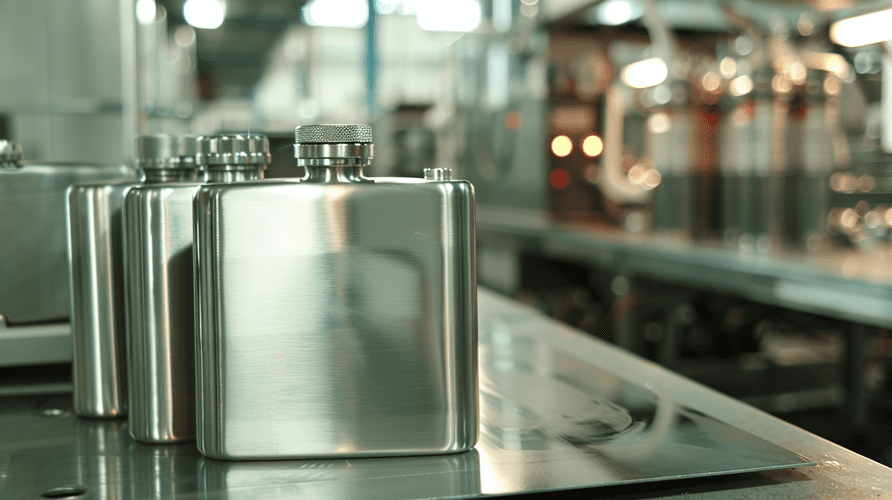
I've helped hundreds of clients like Mark, a business owner from Canada, find the perfect corporate gifts. He used to struggle with suppliers who didn't understand quality. But once we focused on the right details, his gifts went from generic to genuinely impressive. Choosing the right flask is about more than just a logo; it's about understanding what makes a great product. Before you place your next bulk order, let’s break down what you need to know. This will help you make a choice that truly represents your brand's commitment to quality.
Why is it Called a Hip Flask?
Ever wonder about the name "hip flask"? It might sound a bit old-fashioned. Its history, however, is all about clever, practical design meant to fit close to the body.
A hip flask gets its name because it was designed to be carried discreetly. Its curved shape fits comfortably against your hip or in a back pocket. This made it a convenient way to carry spirits, a tradition that gives it a classic, personal feel today.
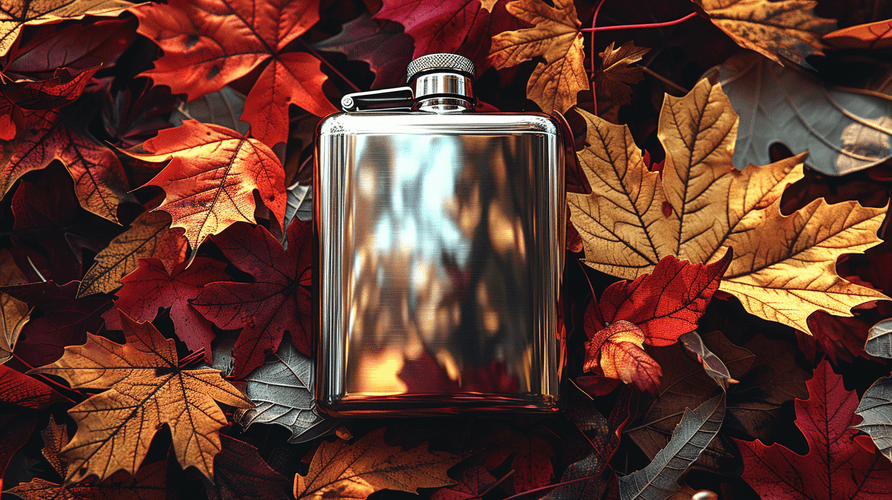
The History Behind the Curve
The hip flask isn't a new invention. Its story goes back centuries, but it really became popular during the Prohibition era in the United States in the 1920s. During this time, alcohol was illegal, so people needed a sneaky way to carry their favorite spirits. The flask's curved, slim design was perfect for hiding under a jacket or in a pocket, away from the eyes of the law. This history gives the flask a sense of rebellion and personality that still appeals to people.
Before stainless steel became the standard, flasks were made from different materials. Early versions were made from glass, which was fragile, or even pig's bladders. Later, pewter became a common choice, but it was soft and could affect the taste of the liquor. The switch to stainless steel was a game-changer. It made flasks durable, safe, and easy to clean, transforming them from a novelty item into the reliable product we know today.
| Material Evolution | Primary Feature | Main Drawback |
|---|---|---|
| Glass | Flavor Neutral | Very Fragile |
| Pewter | Malleable, Classic Look | Soft, Can Dent Easily |
| Stainless Steel | Durable & Safe | Can Vary in Quality |
What is the Best Metal for a Flask?
Choosing the wrong material can ruin the drink and your brand's reputation. Cheap metals can make spirits taste bad or even rust over time. Stainless steel is the best choice.
Food-grade stainless steel, usually 304 or 18/8, is the best metal for a flask. It does not react with alcohol, so it won't add a metallic taste. It is also strong, rust-proof, and has a premium look, making it the industry standard for quality.
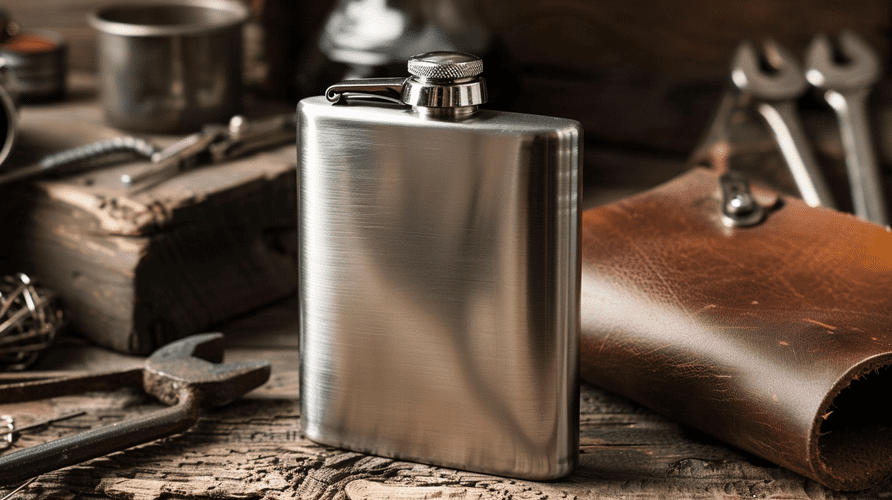
Comparing Flask Materials
When my client Mark first started importing, he received a batch of flasks made from a low-grade metal. His customers complained about a strange taste in their drinks. This is a common problem when you don't specify the right material. That’s why I always recommend food-grade 304 stainless steel. This type of steel is also called 18/8 because it contains 18% chromium and 8% nickel. The chromium provides incredible resistance to rust and corrosion, while the nickel adds to its durability and shine. This specific composition is why 304 steel doesn't leach any flavors into the liquid inside.
While other materials exist, they all have significant downsides, especially for a corporate gift that needs to represent quality. Understanding these differences is key for any procurement officer focused on delivering a reliable product.
| Material | Pros | Cons | Best For |
|---|---|---|---|
| Stainless Steel (304) | Durable, No Flavor Transfer, Affordable | Can be heavy | Everyday Use, Corporate Gifts |
| Pewter | Classic, Lightweight | Soft, Dents Easily, Can Tarnish | Collectors, Special Occasions |
| Titanium | Very Strong, Lightweight | Expensive, Hard to Customize | High-End Niche Gifts |
| Glass | Purest Taste | Extremely Fragile | Storing Spirits at Home |
For B2B purposes, stainless steel is the clear winner. It hits the perfect balance of price, performance, and premium feel.
How to Choose a Flask?
Not all flasks are made the same. A leaky or poorly finished flask is a terrible gift and reflects badly on your company. You need to know what to look for.
To choose a good flask, first check the material. It should be 304 stainless steel. Then, check the seal to make sure the cap is leak-proof. Also, look at the construction for smooth welds. Finally, consider the finish and customization options available.
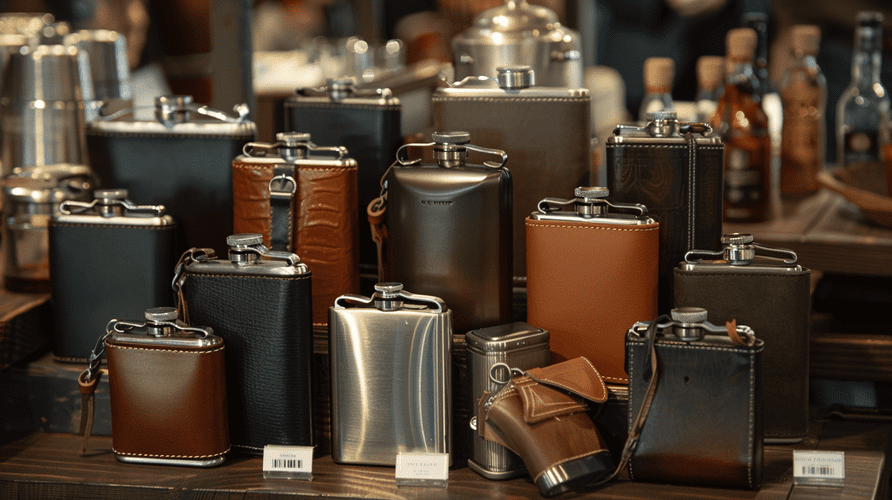
A Buyer's Checklist for Quality Flasks
When I work with a new client, I walk them through a quality checklist. This helps them understand the small details that make a huge difference. A good flask is more than just a metal container; it’s a well-engineered product. Mark, my Canadian client, uses this checklist now to avoid the issues he faced with past suppliers, like leaky caps and rough edges.
First, look at the cap. A "captive cap" is best because it's attached to the flask, so it can't be lost. The seal inside the cap is also critical. It should be made of food-grade silicone, not cheap rubber that can dry out or affect the taste.
Next, inspect the body. The welds are a major sign of quality. I recommend laser welding. This technique creates a stronger, cleaner seam that is less likely to leak compared to traditional welding. Also, run your finger along the edges. There should be no sharp or unfinished spots. A smooth finish shows good craftsmanship. Finally, always ask about certifications. For products touching food or drink, certifications like FDA or LFGB are essential. They prove the materials are safe, which protects both the end-user and your brand.
| Feature | Look For | Why It Matters |
|---|---|---|
| The Cap | Captive design with a silicone seal | Prevents loss and ensures a leak-proof fit. |
| The Body | Smooth, laser-welded seams | Indicates strong, quality construction. |
| The Finish | Even polish or coating, no sharp edges | Reflects craftsmanship and user safety. |
| Certifications | FDA, LFGB, or equivalent | Guarantees the materials are food-safe. |
How Do You Increase Flask Quality?
A standard flask is fine, but it can feel generic. You want your corporate gift to be memorable, not just another item. Simple upgrades can boost its perceived value significantly.
To increase a flask's quality, you can specify better materials like 316 stainless steel. You can also request advanced laser welding for perfectly smooth joints. Premium finishes and sophisticated branding, like deep laser engraving, also elevate the product into a truly high-end gift.
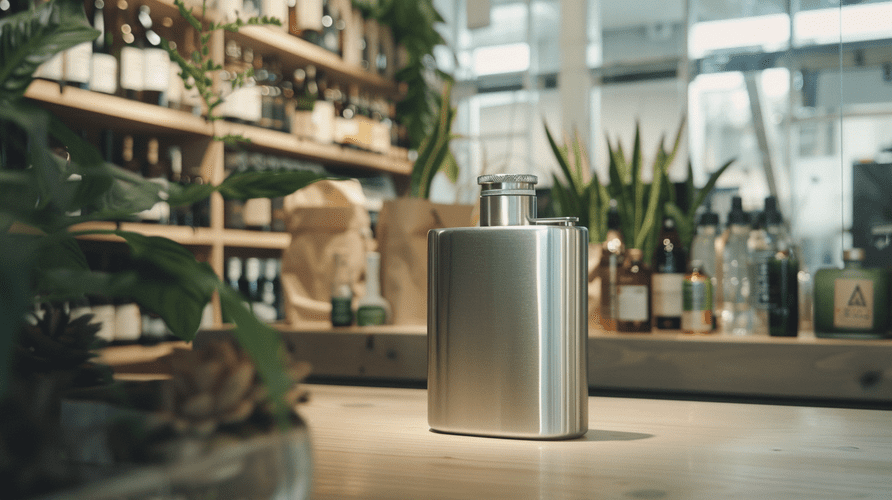
From Standard to Premium: Upgrading Your Order
Making a flask feel more premium doesn't have to be complicated. It often comes down to a few key specifications. For clients who want to create a truly impressive gift, I suggest moving beyond the basics. For example, while 304 steel is excellent, 316 stainless steel is even better. It contains molybdenum, which gives it superior corrosion resistance. This is especially good for use in humid or coastal areas and is a great talking point.
Another upgrade is the wall thickness. A flask with slightly thicker steel walls feels more substantial and durable in the hand. It immediately communicates higher quality. Finally, the branding method makes a huge impact. While simple printing is fine, laser engraving offers a permanent, elegant mark that won't wear off. For a colorful and durable finish, powder coating is an excellent choice. It adds a pleasant texture and protects the steel underneath. These upgrades turn a simple flask into a premium product that people will treasure.
| Quality Level | Standard Features | Premium Upgrades |
|---|---|---|
| Material | 304 Stainless Steel | 316 Stainless Steel |
| Construction | Standard Welding | Laser Welding, Thicker Walls |
| Finish | Basic Polish | Brushed Finish, Powder Coating |
| Branding | Screen Printing | Laser Engraving, Full-Color Print |
Should You Wash a Hip Flask?
Many people are not sure how to care for a hip flask. An unwashed flask can start to smell bad or get residue inside. So yes, cleaning is simple and necessary.
You should always wash a hip flask. Rinse it with warm water before you use it for the first time and after you finish its contents. For a deeper clean, use warm, soapy water or a mix of vinegar and water. Washing keeps it hygienic.
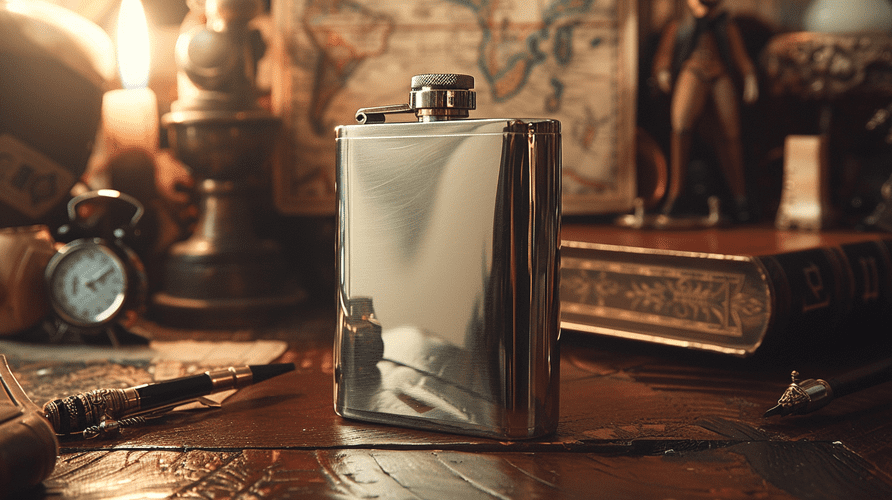
Simple Steps for Flask Care and Maintenance
Proper care is important for making sure a flask lasts a long time and always provides a clean taste. I always include care instructions with my shipments because it helps the end-user and shows my clients that I think about the entire product lifecycle. It’s a small touch that addresses a common pain point.
Here is a simple guide for flask care:
-
First-Time Rinse: Before you use a new flask, fill it halfway with warm water, close it, and shake it for about 15 seconds. Empty it and rinse again. This removes any dust or residue from the manufacturing process.
-
After-Use Rinse: After you finish the contents, rinse the flask out with warm water as soon as you can. This prevents any leftover liquid from drying and leaving behind a sticky residue or flavor.
-
The Deep Clean: For a more thorough cleaning, especially if you're storing it for a while, use a mix of equal parts white vinegar and water. Fill the flask, shake it, and let it sit for about 20 minutes. Rinse it out thoroughly with water afterward to remove any vinegar taste.
One important tip: never use harsh, abrasive soaps or put your flask in the dishwasher. Dishwashers can damage the seals and any special finishes. Always let the flask air dry completely with the cap off. This prevents moisture from getting trapped inside, which can lead to bad odors.
Conclusion
Stainless steel hip flasks are a stylish, durable, and smart corporate gift. By choosing high-quality materials and construction, you give a gift that truly represents your brand's excellence.

